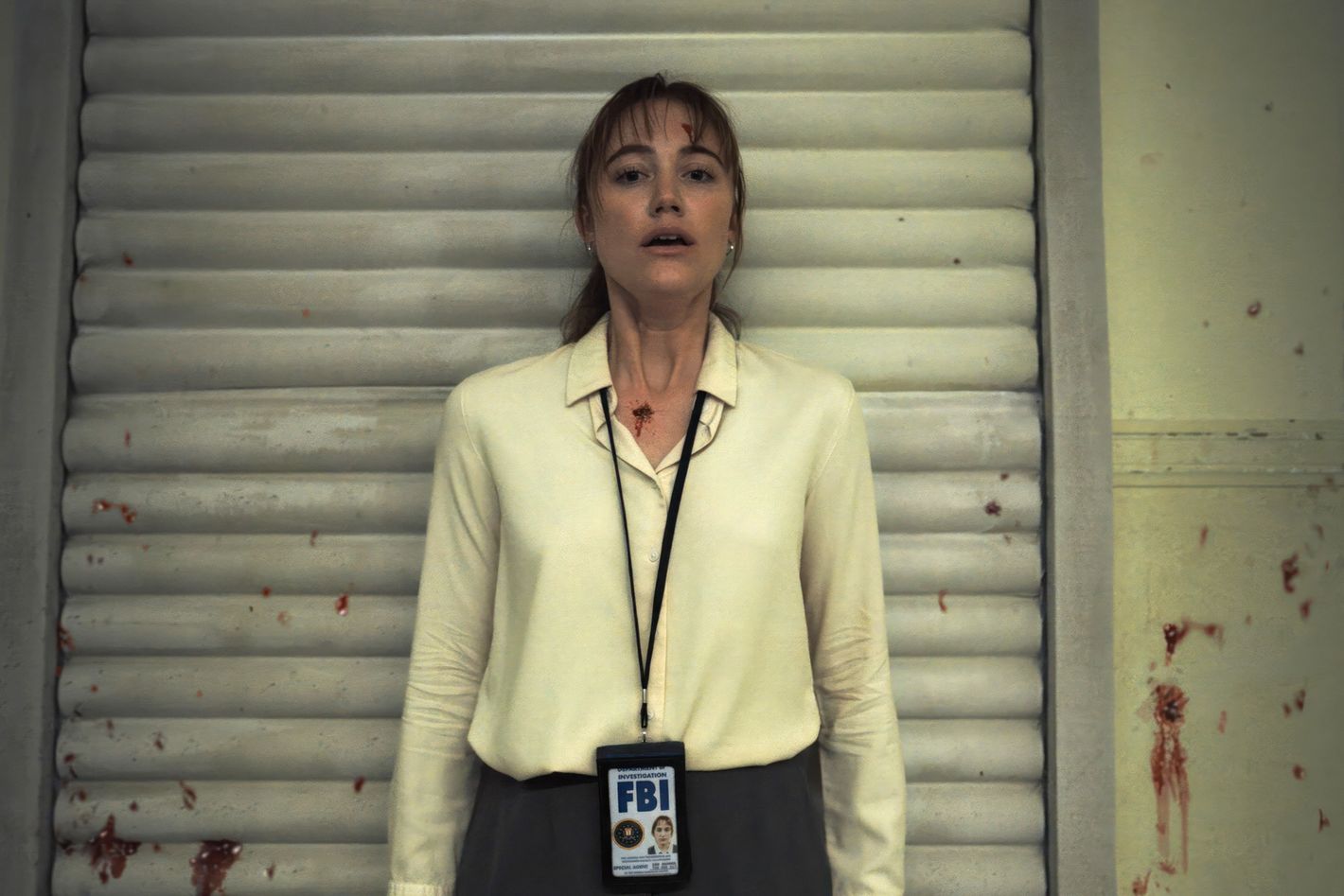Longlegs Is Mostly Terrifying
This tense, odd thriller mines the horror of ordinary people compelled to do terrible things — an unnerving reflection of modern anxieties.

For at least one full hour, Osgood Perkins’s aggressively stylized Longlegs has the viewer fully in its twisted, tightening grasp. The film’s powerful effect isn’t just the result of expert jump scares — though it has a couple of those — or a creepy story line. Rather, Perkins shoots and edits with unswerving weirdness, sometimes lengthening ominous pauses, sometimes cutting away quicker than expected. He presents a conventional story line (a young female FBI agent searching for a grisly serial killer, à la Silence of the Lambs) and mundane settings (anonymous middle-class homes, empty farms, blank suburban streets) in ways that edge over into what might as well be another dimension. His off-balance compositions and wide angles stretch space in unnatural ways. The movie has a Lynchian sense of the uncanny, of the familiar made unreal.
This applies to the plot and the performances, too. Lee Harker, the film’s protagonist, is played by Maika Monroe with a fidgety anxiety behind the eyes, and the actress delivers her lines in tense little bursts, as if she’s afraid to speak too long lest she reveal too much. Harker is investigating a series of murder-suicides in which fathers have slaughtered their families and then themselves. Strange letters written in a Zodiac-like code and signed “Longlegs” have also appeared at the murder scenes, suggesting that one individual might be behind it all. But what’s the connection? The killings stretch across 30 years. Is a malevolent force compelling these people to go mad? And if so, is it hypnosis, or something more demonic, supernatural?
In other words, Longlegs is yet another modern horror movie in which evil has been refracted and multiplied by the people around us. Unlike with typical slashers or serial killers or demons, the real savagery percolates out to society at large. This idea is not new. Everything from Invasion of the Body Snatchers to Night of the Living Dead to Kiyoshi Kurosawa’s Cure has indulged in it. Go back even further: The Weimar-era thrills of German Expressionism often followed mysterious figures who could possess the minds of others and force them to commit monstrous crimes. Those fictional Caligaris and Mabuses and Nosferatus foretold the arrival of the real-life madmen lurking around history’s corner. So it maybe says something about us that the most compelling horror premises of recent years — as I type these words, there are sequels to both Smile and It Follows in the works — have mined the potential of ordinary people, our friends and neighbors, to commit great evil in service of elusive, powerful forces. Ever the social barometer, the horror genre can’t help but reflect a people consumed by fear of one another.
The off-kilter mood of Longlegs also serves this idea well. Perkins relays basic information in savvy, unsettling ways. This is a serial-killer mystery in which the serial killer is already known to us — sort of. We see a flash of Longlegs’s face in a striking (and terrifying) early scene, and while he doesn’t look anything like Nicolas Cage, the opening credits spell it out quite clearly: “Nicolas Cage as Longlegs.” Perkins never allows the viewer to settle in, keeping us on edge in a way that probably reflects Harker’s own troubled mind. The reason the relatively inexperienced agent has been put on this decades-long case is because she shows psychic potential: In an early scene, we see her catch another serial killer by sensing which house he’s hiding in. Ensuing tests on her abilities suggest that she might well have paranormal powers, but they’re not entirely conclusive. When Harker points out that she failed as many of the tests as she passed, her superior Carter (Blair Underwood) replies, “Half-psychic is better than not psychic at all.” True, but it probably doesn’t make Harker any less confused about what she’s actually seeing, hearing, or intuiting.
It’s a genuine feat that Longlegs keeps this sense of disorientation going for as long as it does. Unfortunately, as with so many horror movies — even some good ones — the film ultimately feels the need to explain itself. The final act becomes weirdly mired in exposition: It dumps a lot of information on us while simultaneously confusing us, partly because Perkins tries to navigate his story’s revelations while still maintaining stylistic control over the picture. The tension between form and content, which so enriched the film initially, starts to become untenable. Our attention starts to drift. Horror is built on helplessness in the face of the unknown, and at their best, the true masters of the form have been unafraid to leave us hanging, to not resolve too much. In movies like The Shining or Lost Highway or Us, we never quite get the full picture, so the nightmare goes on well after the credits have rolled. Longlegs is terrifying for much of its running time, and it should satisfy most genre fiends. But the greatness that earlier seemed well within its grasp eludes it by the end.
